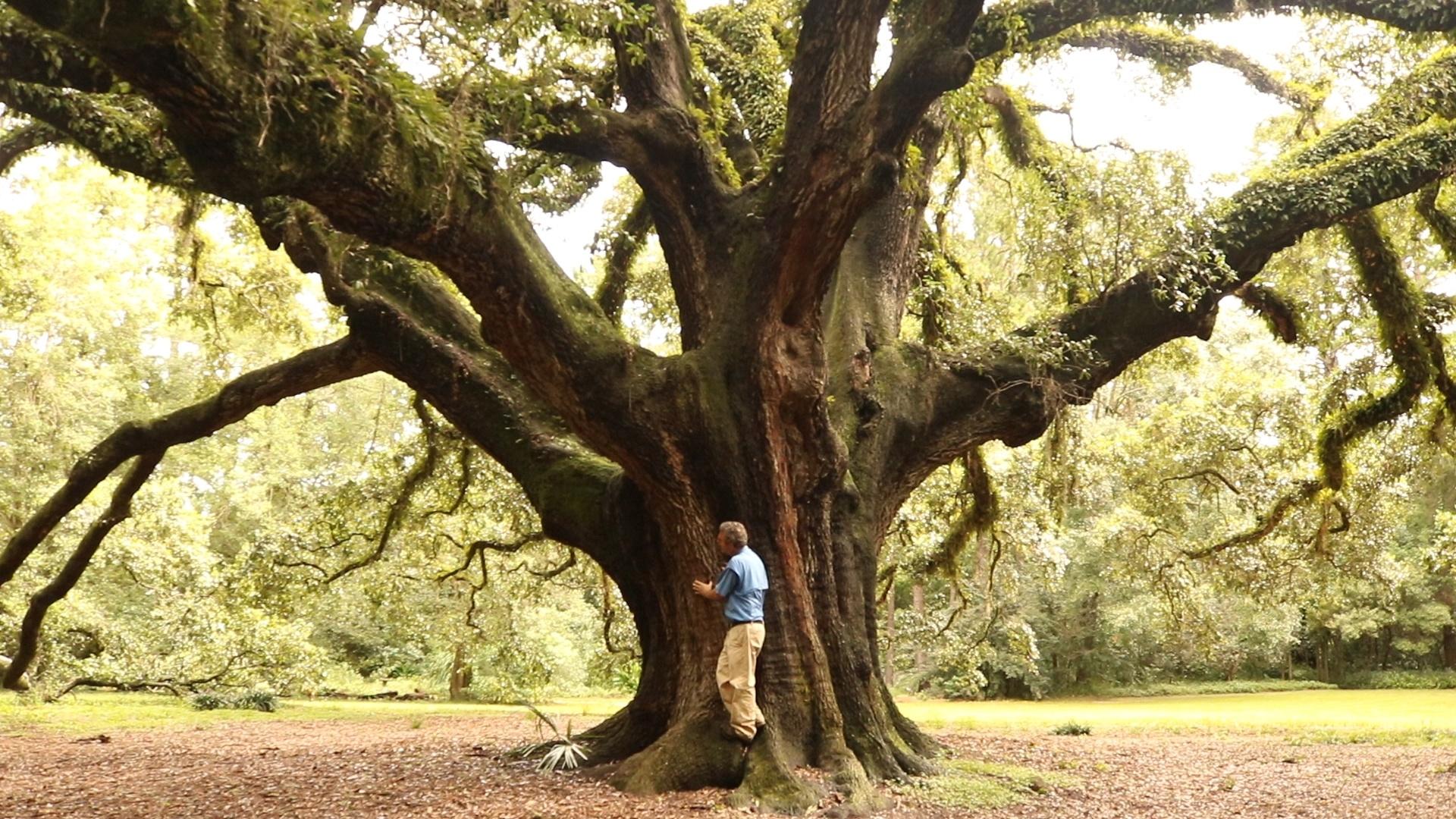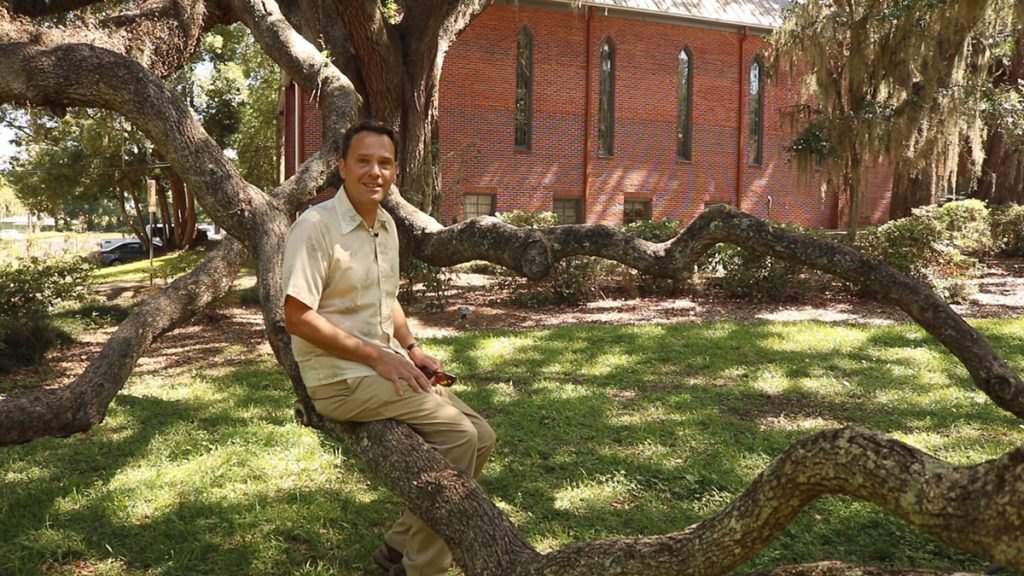

Tallahasseeans love their live oaks, and often when these trees are threatened by development, there’s resistance. We look at our relationship to this iconic southern tree, and how they have seen Tallahassee grow and change.
“So, why does Tallahassee have a love affair with live oaks?” asks Jonathan Lammers, a historian and advocate for historic buildings and heritage trees. He’s sitting on a long, winding live oak branch that touches the ground here in Cherokee Park. “I think most people, when they’re in the presence of a huge live oak, there’s a certain spiritual quality to it that you just can’t help but feel.
“They are magnificent and enormous living things. It’s like confronting a blue whale, except you get to do it on land.”


I’m guessing more of us have sat in the shade of one of these trees than have taken the time to really look at one. A mature southern live oak (Quercus virginiana) has a thick, dense trunk from which muscular branches arch out in every direction. If they have the space, and the humans who care for the tree don’t trim them, some branches will touch down and run along the ground, not unlike arms resting on a table; arms grown furry with resurrection ferns and Spanish moss, their trunks clothed in vines and lichens. Between the branches that touch down, and those that reach up and out, their canopy can cover 150 feet. Live oaks can appear quite stately, when they have space.
As Tallahassee has grown and expanded over the last century, we’ve often claimed their space for roads, condominiums, gas stations, and other construction. And when that happens, there are often residents there to protest it. A couple of weeks ago, a Blueprint Intergovernmental Agency meeting ran past midnight as dozens of people spoke on behalf of an oak. A petition to save the Benton Oak, as it is known, garnered over 35,000 signatures. In the end, though, none of that was enough to convince City and County commissioners to alter the rerouting of FAMU Way through the oak’s home in the Boynton Still neighborhood.


Rob Diaz de Villegas is a senior producer for television at WFSU Public Media, covering outdoors and ecology. After years of producing the music program OutLoud, Rob found himself in a salt marsh with a camera, and found a new professional calling as well. That project, the National Science Foundation funded "In the Grass, On the Reef," spawned the award-winning WFSU Ecology Blog. Now in its tenth year, the Ecology Blog recently wrapped its most ambitious endeavor, the EcoCitizen Project.
Rob is married with two young sons, who make a pretty fantastic adventure squad.





